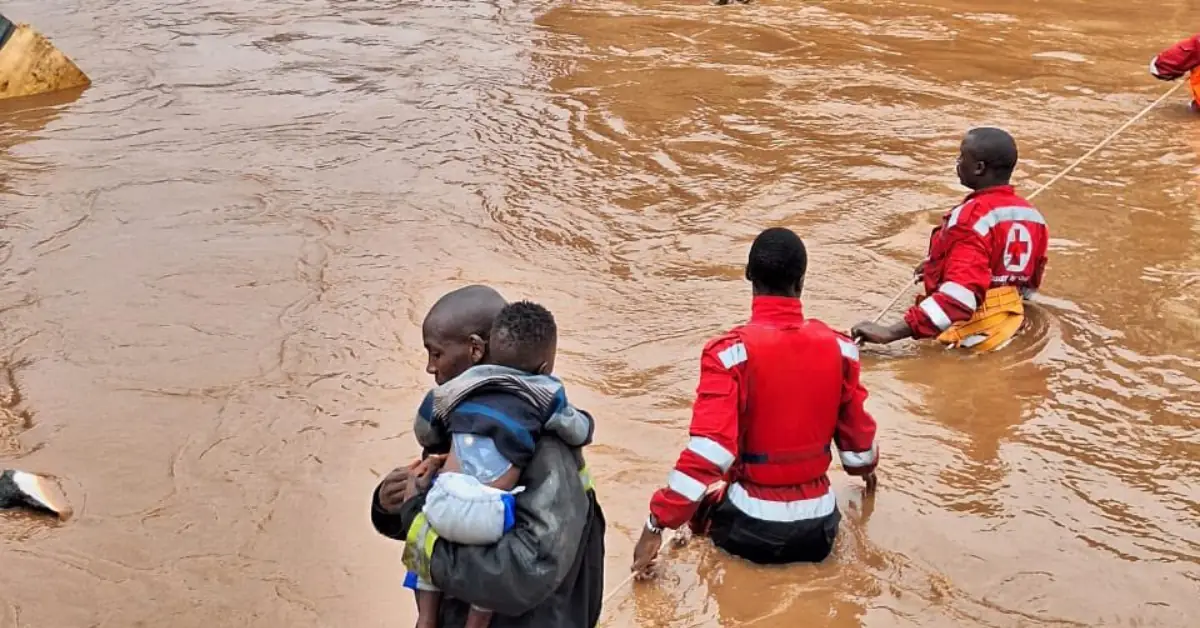Kenya nairobi flooding – As Nairobi, Kenya, battles the aftermath of catastrophic flooding, we delve into the causes, consequences, and potential solutions to this pressing issue. The recent deluge has left an indelible mark on the city, highlighting the urgent need for proactive measures to mitigate future disasters.
The relentless downpours have inundated homes, displaced thousands of residents, and crippled infrastructure, exposing the vulnerabilities of Nairobi’s urban landscape. The government, humanitarian organizations, and the resilient community are working tirelessly to provide aid and support to those affected, while experts grapple with long-term solutions to prevent future flooding.
Introduction
Nairobi, the capital city of Kenya, has experienced severe flooding in recent years, causing widespread damage and displacement. The flooding has been attributed to a combination of factors, including heavy rainfall, poor drainage systems, and unplanned urbanization.
The impact of the flooding has been significant, with thousands of homes and businesses destroyed, and hundreds of thousands of people displaced. The flooding has also caused widespread damage to infrastructure, including roads, bridges, and schools.
Government Response
The Kenyan government has responded to the flooding by providing emergency aid to affected communities, including food, water, and shelter. The government has also announced plans to invest in flood control measures, such as improving drainage systems and building dams.
However, the government’s response has been criticized by some for being slow and inadequate. Critics argue that the government should have done more to prevent the flooding, and that it has not provided enough support to affected communities.
Humanitarian Response
In addition to the government’s response, there has been a significant humanitarian response to the flooding in Nairobi. Local and international organizations have provided food, water, shelter, and medical care to affected communities.
Some of the organizations that have been involved in the humanitarian response include the Red Cross, the United Nations, and World Vision.
Long-Term Solutions
In order to prevent future flooding in Nairobi, it is important to implement long-term solutions. These solutions include improving drainage systems, building dams, and implementing flood warning systems.
It is also important to address the underlying causes of flooding, such as unplanned urbanization and climate change.
Climate Change and Flooding
Climate change is a major factor contributing to the increased frequency and severity of flooding in Nairobi. Climate change is causing more extreme weather events, such as heavy rainfall, which can lead to flooding.
It is important to take action to mitigate climate change, such as reducing greenhouse gas emissions, in order to reduce the risk of flooding in Nairobi and other cities around the world.
Community Resilience, Kenya nairobi flooding
The Nairobi community has shown great resilience in the face of flooding. Community organizations and local leaders have played a vital role in disaster response, providing food, water, and shelter to affected communities.
Community-led initiatives have also been successful in mitigating the impact of flooding. For example, some communities have built their own drainage systems and flood warning systems.
Infrastructure and Urban Planning
Weaknesses in Nairobi’s infrastructure and urban planning have contributed to the severity of flooding in the city. For example, the drainage systems are often inadequate, and many buildings are built in flood-prone areas.
It is important to improve infrastructure and urban planning in order to reduce the risk of flooding in Nairobi. This includes investing in drainage systems, building flood walls, and implementing land use planning regulations.
Summary

The Nairobi floods serve as a stark reminder of the devastating impact of extreme weather events in a changing climate. As the city rebuilds and recovers, it must prioritize sustainable urban planning, infrastructure improvements, and community resilience to withstand future challenges.
The lessons learned from this crisis will undoubtedly shape the future of disaster management in Nairobi and beyond.
User Queries: Kenya Nairobi Flooding
What caused the flooding in Nairobi?
The flooding was caused by a combination of factors, including heavy rainfall, poor drainage systems, and inadequate urban planning.
What are the long-term solutions to prevent future flooding in Nairobi?
Long-term solutions include improving drainage systems, implementing flood control measures, and promoting sustainable urban planning.
How is the government responding to the flooding?
The government is providing aid to those affected, evacuating residents, and working to restore infrastructure.





